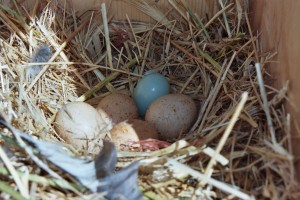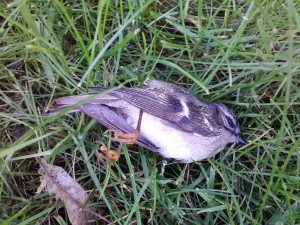Research Overview

I am an organismal biologist who is generally interested in physiological ecology and animal behavior. I tend to focus on birds, and am currently working on several projects with undergraduates at Lafayette College.
Michael Butler Lafayette College
Projects:
Ecological and physiological roles of antioxidants and immune challenges
How do animals contend with challenges posed by the environment? What physiological and behavioral tools can they employ to meet those challenges? To address these questions, I work with free-living and captive birds from a variety of species. I am particularly interested in how animals respond to pathogens or parasites, and examine physiological responses to these and other environmental pressures. My students and I collect data on circulating levels of nutrients, oxidative damage, antioxidants, and immune system metrics. Because many pigments have both antioxidant and immunomodulating roles, we also examine the physiological roles of biliverdin, the blue-green pigment that is responsible for the coloration of some eggshells. Lastly, we place these physiological results in a real-world context by tracking animal behavior, including foraging patterns, both short- and long-term survival, and neophobia. This last project is coordinated by ManyBirds, and features undergraduate involvement (see video overview here!).
Michael Butler Lafayette College
Coping with a human-dominated world
I have begun exploring how animals are affected by living in such close proximity to humans. For example, many of the free-living birds that my students and I work with will incorporate trash into their nests. Is this trash harmful? Does it provide insulation benefits? We are just beginning to understand some of these effects, and we examine nest materials and incubation patterns to answer some of these questions. Additionally, with the ubiquity of plastic, we are also examining the pervasiveness of microplastics within multiple bird populations.
Michael Butler Lafayette College
Window strike mortality
While large windows make college buildings aesthetically pleasing and provide plentiful light for studying students, they can also result in the death of many songbirds that accidentally fly into them. Several undergraduates,
Professor Brandes (Civil and Environmental Engineering), and I are beginning to investigate this phenomenon on Lafayette’s campus. We have begun to create a long-term dataset on mortality rates on campus, and we hope to eventually not only understand seasonal and weather-related patterns on mortality rates due to window strikes, but to also use the data to suggest changes that would reduce the incidence of avian mortality on campus due to window strikes. More recently, we have joined a
collaborative network to investigate this phenomenon more broadly.



